Bio-based materials like flax, hemp, kenaf, and jute are reshaping automotive production for sustainability. These natural fibres offer durable, lightweight alternatives for several vehicle components, from dashboards to electric vehicle batteries.
Discussions about sustainability in the automotive industry inevitably focus on electrification and the quest for zero emissions mobility. There are, however, other ways in which automakers and suppliers can introduce sustainable solutions. Many are well established, but one solution in particular is of growing interest in mainstream vehicle manufacturing: the use of bio-based materials.
Automakers and suppliers are exploring the potential of natural fibre-based alternatives to plastics, carbon fibre, and glass fibre in visible and non-visible surfaces, as well as sustainable ingredients in the plastic and rubber used in seals, hoses, tyres, and even electric vehicle batteries.
Growing in the fields
The use of natural fibres in automotive applications typically involves yarns made from flax, hemp, kenaf, and jute – durable and fast-growing plants from which versatile, robust, and sustainable fibres can be produced.

Renault’s new electric Scenic E-Tech has a 43% bio-sourced kenaf dashboard cowling, and a steering wheel cover which is 51% bio-sourced, including PVC made from ricin oil, and cotton weft.
VW is exploring the use of natural latex and jute, and Toyota is exploring kenaf fibres in a new polyurethane composite for door trims.
Two decades ago, Ford made a name for itself in biomaterials, using soy-based foam, hemp, agave fibre – a waste product from tequila production provided by Jose Cuervo – and used coffee granules.
“There are many benefits to using bio-based materials instead of petroleum-based ones,” says Debbie Mielewski, Technical Fellow of Sustainability at Ford Motor Company. Mielewski initiated the biomaterials program at Ford Research in 2001, pioneering the soy-based foam that is now used in all of Ford’s North American built vehicles.
“Bio-based materials such as natural fibres used to reinforce polymers have a significantly lower environmental footprint, as the plant absorbs carbon dioxide during growth, and it is sequestered in the automotive part,” says Mielewski. “They reduce composite weight by up to 30%, and fuel economy is improved whenever the vehicle becomes lighter.
”Furthermore, less energy is needed to mould parts, reducing cost. Indeed, every bio-based material we implemented over the past 20 years resulted in lower cost. They’re also renewable, and as they are often a side product of agriculture, they also provide much needed farmer revenue.”
Natural fibres are also better for recycling than glass fibres, she adds, noting that natural fibre properties do not deteriorate during recycling.
Race to road
One automotive industry segment constantly on the hunt for sustainability opportunities is motorsport. It’s long been seen as a breeding ground for automotive innovation, and the ideal testbed for product durability. Swiss natural fibre company Bcomp has been working with BMW on bio-based materials for its racing cars, through a partnership which began with a flax fibre-reinforced cooling shaft for BMW’s iFE.20 Formula E car.

Although BMW has exited Formula E, the BMW M4 GT4—which races in events such as the British GT Championship, DTM, and the Indianapolis 8 Hour—currently boasts the most natural fibre composite parts of any series GT race car. BMW has used Bcomp flax solutions for almost all carbon fibre components in its DTM touring cars, including the dashboard and centre console, and body parts including front splitter, rear wing, doors, trunk, and hood.
The automaker has indicated that it will explore the use of flax parts in its M range of road cars and M Performance parts, and in April 2022, backed Bcomp in the company’s Series B financing round, via BMW i Ventures. And it’s not alone; other investors include Volvo Cars Tech Fund, Porsche Ventures and Airbus Venture.
Bcomp produces flax-based thermoplastics and technical fabrics for interior and exterior parts, and claims that an interior panel made using its thermoplastic powerRibs can be half the weight of an equivalent plastic part, while using up to 70% less plastic. The solution is compatible with high-speed production lines, costs less to produce, and reduces fuel consumption for the end user, explains Per Mårtensson, Chief Growth Officer at Bcomp.
Dematerialisation
Motorsport provided Bcomp an entry into mainstream automotive. “We needed a platform to showcase our products and abilities to the big OEMs,” says Mårtensson.

“We had a high-performance material that could replace thin-walled composites, typically roofs, hoods, and door panels in a racing car. That enabled us to prove that we could offer high quality automotive materials.”
Bcomp has since secured its first mainstream contract, delivering ampliTex natural fibre composites for the all-new Volvo EX30’s dashboard and door trim. And he notes Polestar’s interest in promoting Bcomp’s natural fibre decorative interior solutions.
“In our plug and play interior solutions, we provide natural fibre circular material solutions where the focus is on fantastic looking decorative surfaces which contribute to the stiffness and structure of the part, with added lightweighting benefits,” says Mårtensson.
“A priority for sustainability is to use as little material as possible in a car. We call this dematerialisation and it’s the only way to accelerate energy efficiency,” he explains. “There are many ways to improve a car’s efficiency, but reducing weight is crucial. We’re using a lightweight circular material that grows in the fields capturing CO2.”
Carbon fibre is a striking material used to highlight value and performance, but Mårtensson believes Bcomp can achieve the same effects with natural fibres. “Carbon fibre is an amazing material, but it’s expensive, especially if its benefits are not fully leveraged. If you need stiffness, but not strength, we have a material that does exactly that, with a very low eco footprint,” he explains. “We can offer equivalent performance, weight, and stiffness as carbon fibre, but with up to 85% reduction in the CO2 footprint, while still using the same epoxies.”
Flax, he says, is ideal for body parts and performance composite structures. “You can combine flax with thermosets, typically epoxies for glass fibre and carbon fibre exterior parts, and low volume decorative parts. For high-volume automotive interiors, it can be combined with thermoplastics, offering recyclability and a low CO2 footprint.

“However, we focus on mono-material solutions, where the whole structure is of the same material, including the attachment points, the substrates that carry the surface, and the surface itself.” Parts produced in this way, he explains, can be milled down and reused in injection moulding, in turn benefiting recyclability.
For automotive interiors, compression-moulding natural fibres can replace injection moulded plastic, says Mårtensson. “Instead of injection moulded parts covered with carpet in the trunk, tunnel, or console, you can have a natural fibre trim with our powerRibs on the back and reduce weight by up to half.”
And by using compression moulding, fixings can be added on the back in one shot to produce the part as a single piece, with no additional covering required. “Compression moulding is a more efficient process that adds value.” To support customers set up for injection moulding, Bcomp is developing solutions to integrate its materials into injection moulding applications.
“We have a performance material for decorative parts that reduces weight and plastic, and looks stunning, but is still sustainable,” he says. “Instead of just focusing on cutting materials from the car entirely, you can de-materialise, by reducing weight, and replacing polymers with circular materials. But first make cars lighter and more efficient. It’s all about de-materialisation,” he concludes.
Batteries that grow on trees
With roots reaching back to the 1300s, Stora Enso has a storied history in forestry, paper and pulp, and now sees its future in renewable materials.
“Many materials currently made out of fossil resources, can be made from trees,” says Juuso Konttinen, who leads the Biomaterials Growth Business Unit at Stora Enso.
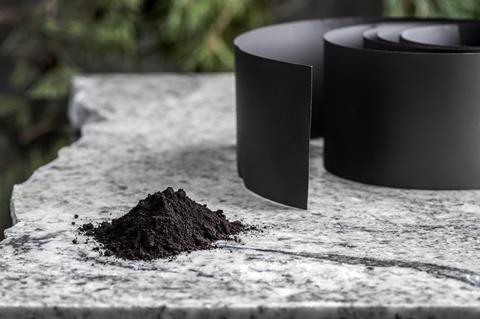
Wood has three main components: cellulose, hemicellulose, and lignin. Stora Enso has developed a lignin-based solution that can be used in electric vehicle batteries. “Lignode is our brand name for a hard carbon that we make from lignin, which can be used to replace graphite as an anode material in lithium-ion batteries and the emerging sodium-ion battery space,” explains Konttinen.
Lignin accounts for up to 30% of a tree – it’s the binder that gives it stiffness and protects it from rotting. “After cellulose, lignin is one of the biggest renewable sources of carbon anywhere. It’s carbon rich, with good energy density.”
The promise of a sustainable alternative to graphite is such that Stora Enso has secured several development contracts, including Polestar for its Zero project, as well as cell and battery maker Northvolt, and others yet to be announced.
China controls almost all graphite, and its recent decision to curb graphite exports has further underlined the global automotive industry’s vulnerability regarding this vital battery material. It also boosts the prospects for a company developing a sustainable replacement to graphite. Consider the volumes: typically, 1kg of graphite is required per kilowatt-hour of power in an EV battery – and it’s very difficult to recycle. As a result, automakers and battery companies are open to alternatives, especially one grown on trees. “Our product and value proposition resonates so well, we can get to the right tables to discuss this as an opportunity,” says Konttinen.
And Lignode’s properties can be applied elsewhere, too. “One of the most advanced applications is as a binder, and can be used in sustainable alternatives to phenol-formaldehyde to reduce toxicity and improve a product’s carbon footprint. And longer term, we expect lignin to be used to introduce renewable components to bitumen.”
A new material class
Another company making use of the properties of trees is UPM Biochemicals. Like Stora Enso, UPM grew out of the paper and pulp industry, and is now focusing on developing new sustainable wood-based materials. Like Stora Enso, UPM Biochemicals also makes use of the lignin, to produce Renewable Functional Fillers (RFFs); and it uses the cellulose for bio-based monoethylene glycols and monopropylene glycols, explains Florian Diehl, responsible for the RFF business at UPM Biochemicals.
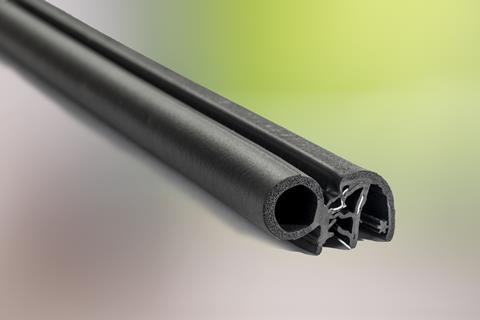
“Fossil-based sources, notably crude oil, account for 95% of the chemical industry’s feedstock. We offer a renewable, wood-based solution for functional fillers,” explains Diehl.
The chemical industry adds high volumes of functional fillers to formulations such as polymers, adhesives, coatings, plastics, rubber, and composites, to contribute functional characteristics and enhance their properties or performance. Typically, such fillers include talc, clay, glass microspheres, silica and silicates, and carbon black.
Compared to many of the functional fillers used in the rubber and plastics industry, notes Diehl, UPM’s Renewable Functional Fillers are a sustainable alternative offering equivalent or even improved performance and lower density. “For example, we can offer a density 50 percent lower than talcum in polypropylene,” says Diehl. “By replacing talc with RFF, the final plastic parts are much lighter.”

From 2024, UPM will produce renewable functional fillers at a new biorefinery in Leuna, Germany. RFF is a completely new material class, offering a unique property profile, and is CO2 neutral, notes Diehl.
“It can be used in every plastic part in the car, and in all rubber parts such as door seals, hoses, and even tyres.”
A standard rubber formulation, he explains, consists of at least ten different ingredients, including rubber, filler, and oils. “Our core competence is to provide renewable materials which can be used by compounders and converters.”
The automotive industry is targeting decarbonisation, but by its very nature, the materials sector cannot fully decarbonise, says Diehl. “That’s why we’re seeking to defossilise materials, using renewable carbon.”
Bio-based materials ‘will be ubiquitous’
A proponent of biomaterials, Mielewski cites only benefits to their use in manufacturing. “We found that natural fibre composites can meet the robust performance and durability of automotive applications, without compromise. They are generally processed at lower injection moulding temperatures than glass fibre or talc composites, which saves energy. In addition, certain composites were found to have enhanced properties.”
While acknowledging the automotive industry’s resistance to change and perceived risk, Mielewski remains bullish on the prospects for bio-based materials in automotive. “Our understanding of natural materials over the past 20-plus years is that they can provide significant benefits in weight reduction,” she says. “They also use less energy during processing, and enhance material properties, all while having a reduced impact on the planet. Although the transition has been slow, I believe that in the future these materials will be ubiquitous.”































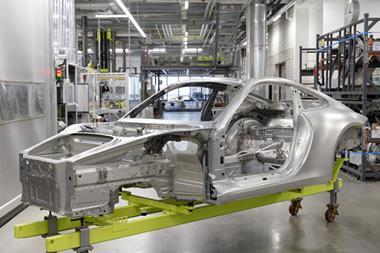

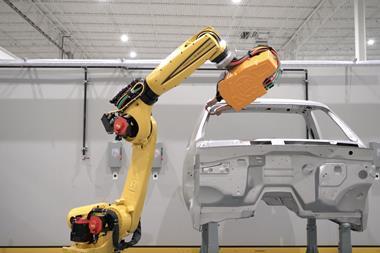
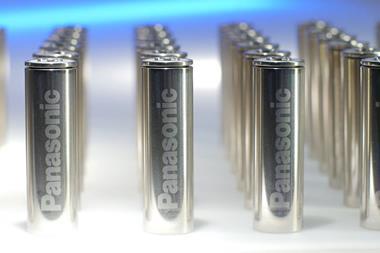



No comments yet